TechRadar Verdict
If you want to breathe easy in a space that’s up to 100sqm / 1,076sqft, you’re going to want to consider the Dyson Purifier Big+Quiet...if you can afford it. As the name suggests, this purifier is both big and quiet, even with the fan running at full bore. There are a multitude of sensors to help it detect and filter quite a few different common pollutants, then project the clean air up to 10 meters. It truly is a fantastic purifier fan, but it will cost you an arm and a leg.
Pros
- +
Recognizes several pollutants
- +
Powerful fan
- +
Very easy to move around
Cons
- -
Big in size and price
Why you can trust TechRadar
Dyson Purifier Big+Quiet Formaldehyde: Two-minute review
Recent updates
January 2024: The Dyson Purifier Big+Quiet Formaldehyde was initially only available in the US and Australia, but one model is now available in the UK as well. We've updated the price section of this review to reflect that.
It was not love at first sight with the Dyson Purifier Big+Quiet Formaldehyde, but after just one day of using it in my own home, I don’t want to ever be parted from it – strong words for a rather big and bulky purifier fan, but I stand by it. It’s completely different from any of Dyson’s previous home purifiers – in terms of both design and functionality – although it shouldn’t be confused with the HEPA Big+Quiet that’s specifically for commercial spaces.
Like its name suggests, it is big and it is quiet. It’s been made to circulate clean air in large rooms while standing in a corner instead of in the center of a space to be at its most effective. Dyson says it can service spaces that are up to about 100sqm / 1,000sqft in size, projecting filtered air up to 10m. Moreover, the angle of the propelled air can be adjusted (there are three to choose from), so it doubles up as a powerful fan as well which, at full bore, isn’t louder than 56dB.
Dyson has adopted cone aerodynamics to more than double the Coanda effect the brand uses in its other purifiers. According to the British brand, this allows the Big+Quiet to process as much as 87 liters of air per second. This is a hard metric to measure, so I’m taking Dyson’s word on this, but it’s easy to believe if you happen to be in the path of the propelled air.
At this point, I think it’s important to point out that there are two Big+Quiet Formaldehyde models identified by their color schemes. For this review I was sent what is the Dyson-exclusive model and is more expensive because it has an additional CO2 sensor and a second filter inside (see the price section below for more details). I found the CO2 sensor very useful as you can never tell if your home needs ventilating or not. I was a little horrified at how quickly CO2 can build up in a space – if I leave my windows closed for about an hour for any reason, the CO2 levels can go from under around 400ppm (which is good) to about 1,500ppm (which isn’t that good). If left in Auto mode, the Big+Quiet will dynamically change its fan speed to circulate the stale air but that’s also an indication that you need to open some doors or windows as high CO2 levels can cause fatigue, headaches and loss of focus.
What the two models share are a whole bunch of other sensors that detect several common pollutants, including dust, pet dander, pollen and formaldehyde (emitted from several household products including new furniture and mattresses), as well NO2 (nitrogen dioxide) from car fumes and volatile organic compounds (or VOCs) from aerosol sprays like deodorants. These are then filtered by a HEPA filter that complies with the H-13 standard, the highest rating for a purification system. This means that the Big+Quiet has a fully-sealed filtration system that can capture up to 99.95% of air particles as small as 0.1 microns, and Dyson promises that the filter used in the Big+Quiet Formaldehyde will last you up to five years.
A tiny onboard display can cycle through the metrics of the different pollutants it’s filtering and shows you what the levels are in your home. These metrics can also be viewed on the MyDyson app if you wish to connect your device to your phone – which is advisable as that will also push out automatic firmware updates to the machine.
That’s a lot of features that will cost you a lot of money – it is Dyson’s most expensive domestic-use purifier to date. If you have the budget for it – and, more importantly, the space for it in a corner somewhere – it could well be worth your while if you’re concerned about your health, especially during wildfire season that’s becoming more common with each passing year.
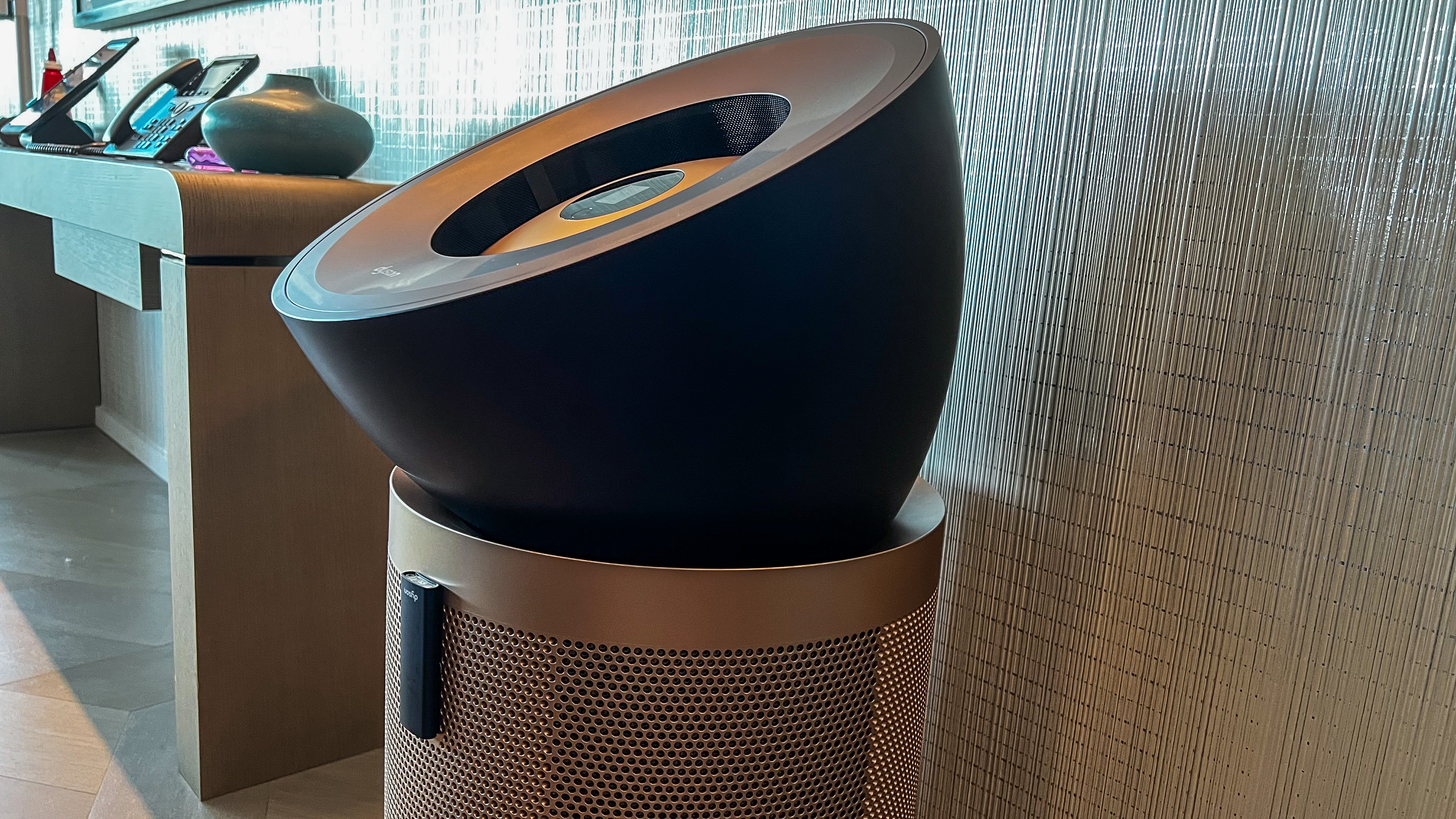
Dyson Purifier Big+Quiet Formaldehyde review: price and availability
- Announced May 2023
- Two models available in US, Australia and Singapore; only one in the UK
- Price starts at $999 / £879.99 / AU$1,499
While Dyson announced the Purifier Big+Quiet Formaldehyde range in May 2023 globally, it was released for Australian shoppers first.
There are two colorways – Bright Nickel / Satin Dark Blue and Satin Dark Blue / Gold, with the latter being a Dyson exclusive only and will not be available to purchase from a third-party retailer. It’s also the model that will get you all the bells and whistles the Big+Quiet can offer, including the CO2 sensor and an additional K-Carbon filter that can capture three times more NO2 than Dyson’s other purifiers. This model will set you back $1,099 / AU$1,599 (around £830).
The cheaper model – which misses out on the above two features – can be purchased from Dyson and authorized retailers for $999 / £879.99 / AU$1,499.
Dyson says that the HEPA filter in the Big+Quiet will not require replacing for about five years – five times longer than the ones used in its other air purifiers – which could make it a little more cost effective than spending on, say, the Dyson Purifier Hot+Cool Formaldehyde that costs $849 / £599 / AU$1,149, although this is also a heater and, thus, more versatile than the Big+Quiet.
Dyson has promised that the Purifier Big+Quiet will be available in other markets subsequently, but no timeline has been revealed and neither have the prices.
There’s no denying that the Big+Quiet range is expensive, especially when you consider alternatives like the Shark Air Purifier 3-in-1 – which is only available in the US at the time of writing – is $400. But if you have a large, open home whose air you’re keen on keeping clean – or at least monitoring – then this could be worth investing in.
Value score: 3.5 / 5
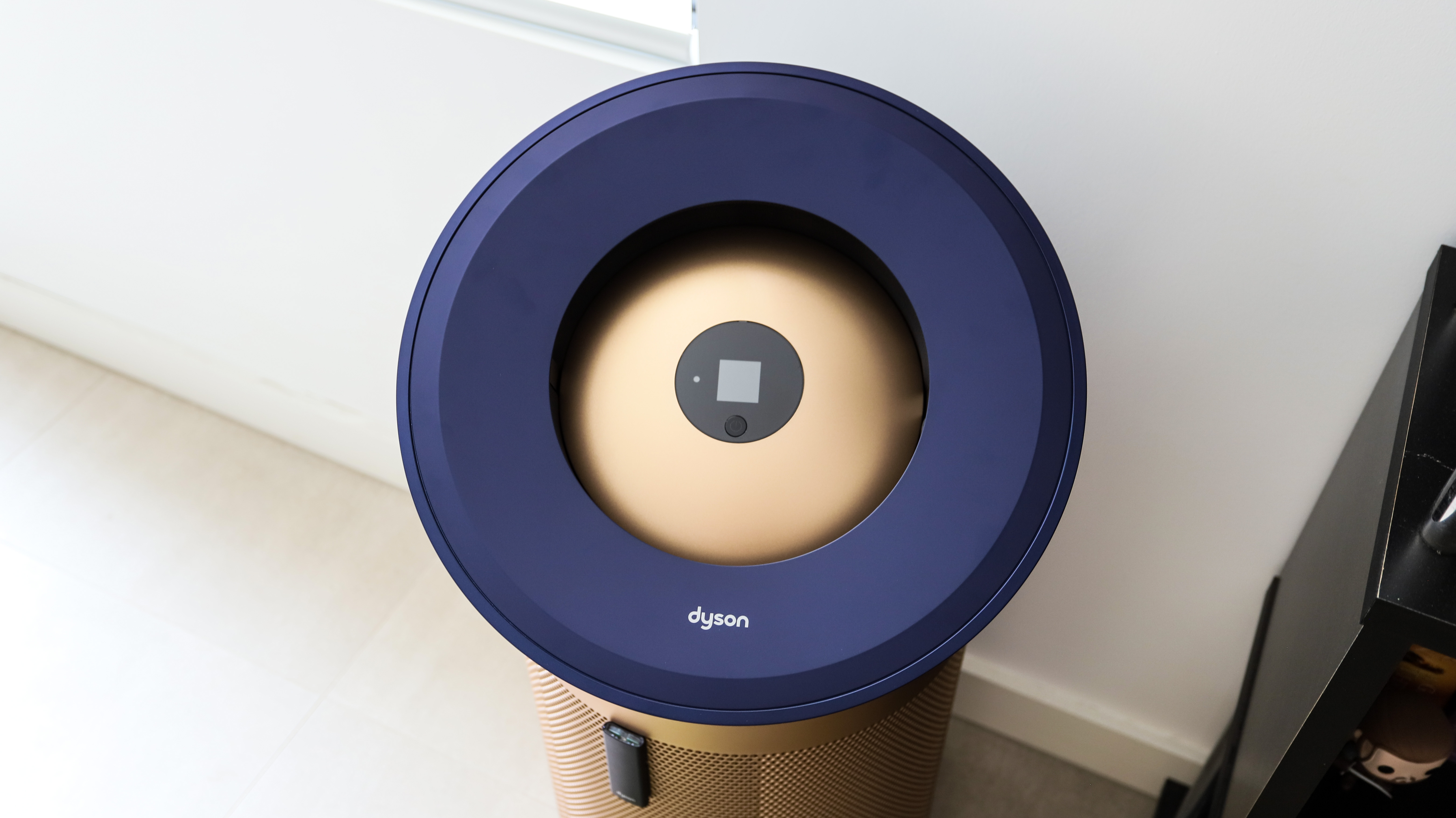
Dyson Purifier Big+Quiet Formaldehyde specifications
| Price: | from $999 / AU$1,499 (about £780) |
| Power settings: | 10 + Auto |
| Room coverage: | up to 100sqm / 1,076sqft |
| Filter type: | Glass fiber HEPA filter + K-carbon filter |
| Dimensions: | 830mm (h) x 434mm (l) x 415mm (w) |
| Weight: | 11.9kg |
Dyson Purifier Big+Quiet Formaldehyde review: Design
- Looks like a large bowl atop a cylinder
- Needs remote control to operate
- Designed to be left in the corner of a large room
When I first laid eyes on the Dyson Purifier Big+Quiet Formaldehyde at its Sydney unveiling, I really wasn’t impressed by its looks. ‘Big’ and ‘bulky’ were the words that occurred to me. Then the Dyson engineer moved the machine… gently, with one finger. Yes, it’s big – but only compared to Dyson’s other home purifiers and bladeless fans – and looks a little clunky, but it’s not as heavy as it appears. Even then, it's a good thing there are hidden wheels that move very smoothly over hard floors (wood and tile). They don’t move as well over carpet, though, and that’s when the Big+Quiet really feels bulky.
It looks unlike any other Dyson purifier that has preceded it – it’s basically a large bowl that sits atop a perforated metal cylinder, each of which is packed separately in the box for shipping. You simply adjust the bowl over the cylinder till it clicks into place. It looks heavy, but it’s not and can easily be lifted.
The rim of the bowl is large, enclosing a smaller dome inside, in the middle of which is a square display that shows the metrics of the different pollutants it’s filtering. You can cycle through them by using the information button (denoted by a lowercase i) on the remote control. Below the display is a small power button – it’s black on black and barely visible. Between the rim and the inner dome are perforations from where the jet of clean air is propelled into a room.
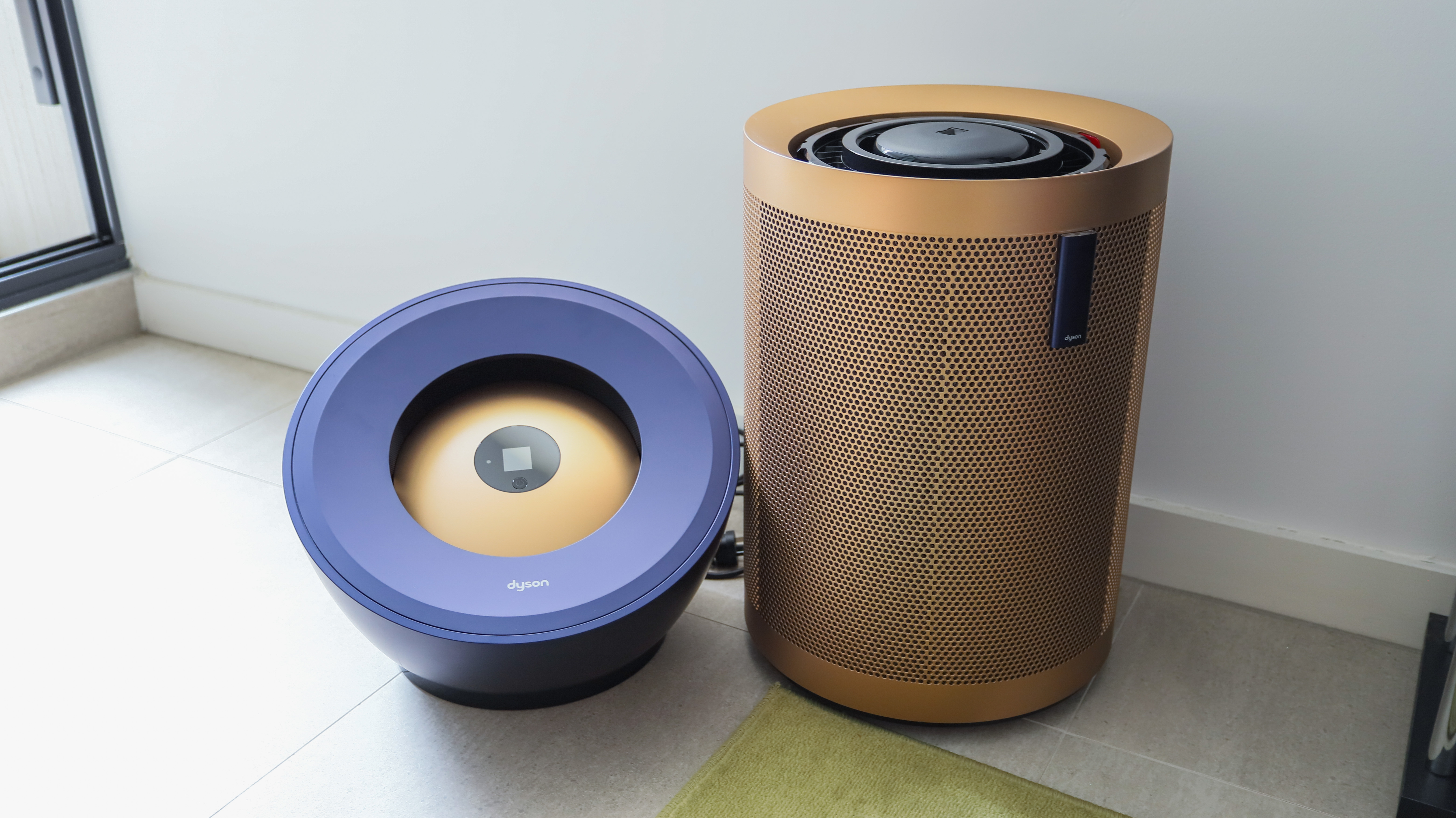
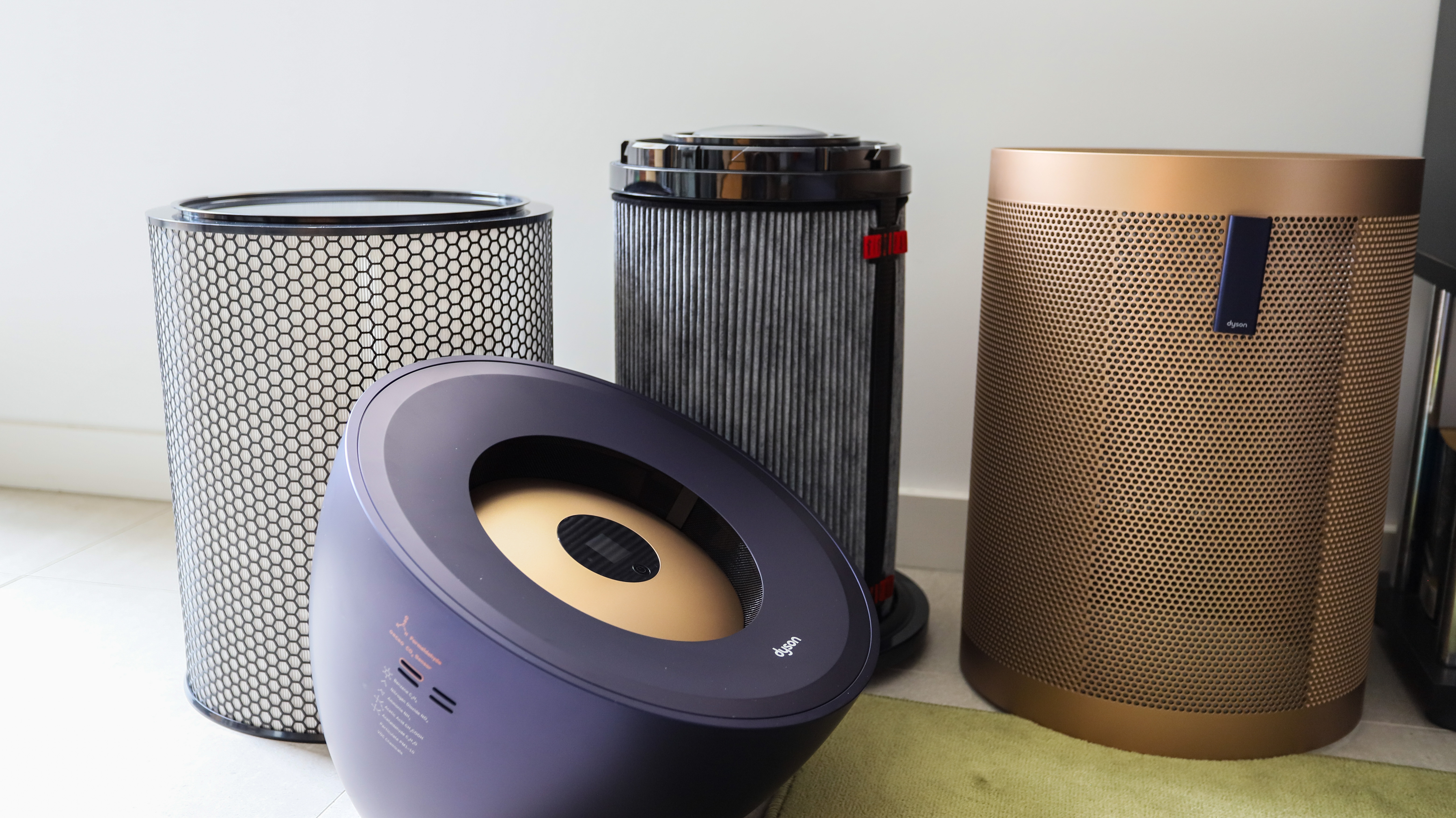
The perforated cylinder houses the filters – two in the case of the more expensive blue-and-gold model (SCO and K-Carbon filter) and the one SCO filter in the cheaper option. When you need to replace or check a filter, you can quickly unclip the bowl using the toggle switch at the back, then lift off the cylinder by pressing on the two red buttons located across from each other on the inside. A small unperforated strip on the cylinder is where the machine’s tiny remote attaches magnetically.
As I’ve mentioned, there are wheels on the base of the Big+Quiet, but they have been designed to be invisible unless you turn the whole machine upside down. They’re extremely smooth on hard floors, needing just the slightest push to roll, but require some elbow grease to move on a low- or medium-pile carpet. I’m guessing it’s going to be nigh on impossible to move over a high-pile carpet or rug.
While you’ll either love or hate the overall design aesthetic of the Big+Quiet, you have to keep in mind that it's been built so it can do its thing while standing unintrusively in a corner somewhere. Other purifiers will need to be placed in the center of a room and the fan kept at its most powerful for them to be at their most effective in a small space. But how many of us really plop our purifiers in the middle of a room?
Design score: 4 / 5
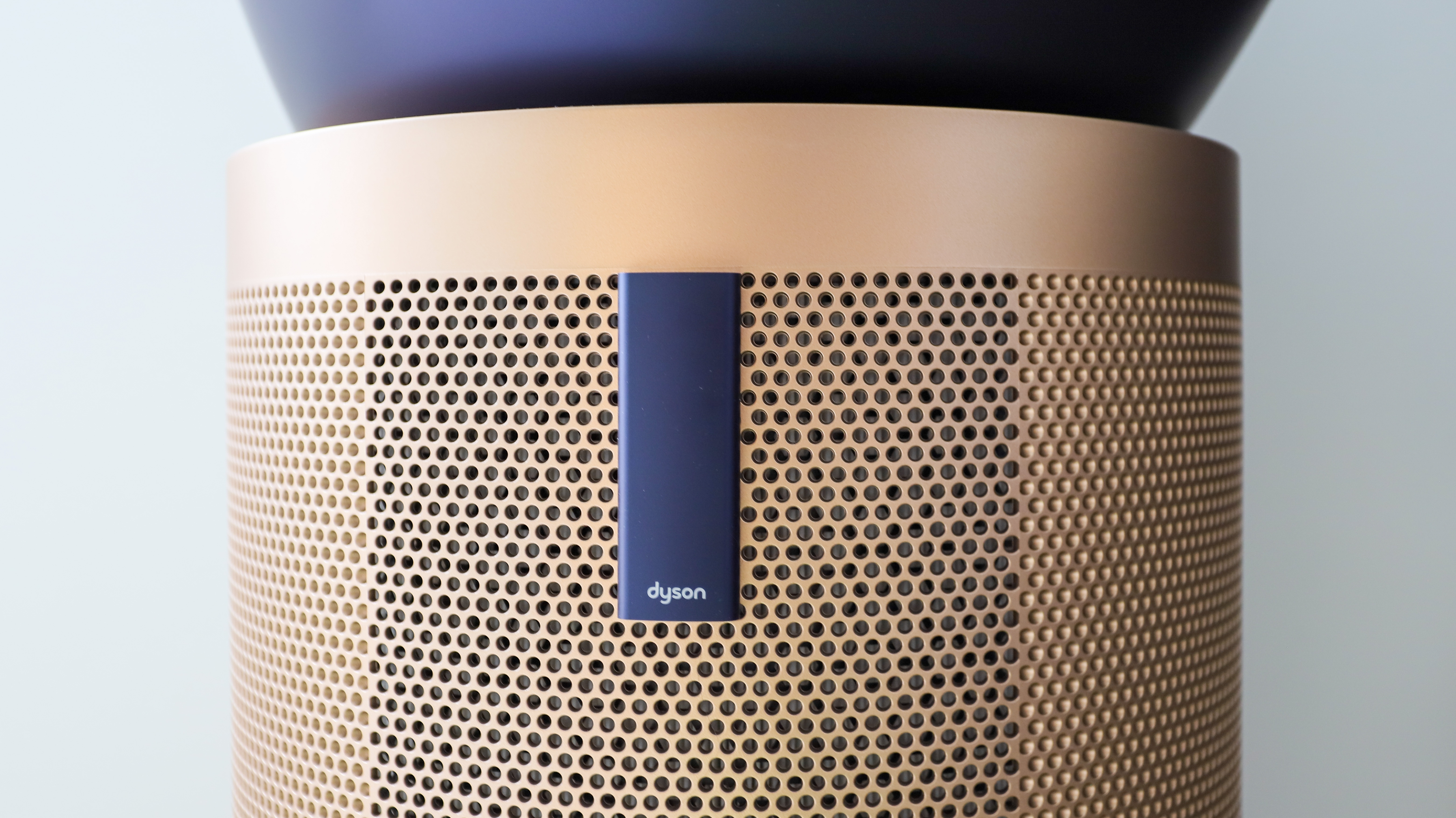
Dyson Purifier Big+Quiet Formaldehyde review: Features
- Three-phase whole machine filtration
- Breeze mode
- Modified filter and the CO2 sensor is handy to have
The top of the Big+Quiet has been designed to harness the power of cone aerodynamics that, Dyson says, more than doubles the airflow passing through the machine in comparison to its other purifiers. Dyson promises that this machine can process up to 87 liters of air per second which, while being a hard metric to measure, is easily believable when you consider the size of the machine and feel the jet of air being projected at full force.
This propelled air is supposed to be mimic the movement of a spring breeze – a Dyson engineer has apparently cracked the code on how to make this happened. I, however, am not quite sure I'd call it a 'breeze', but I found the air circulation very pleasant.
This air movement is what Dyson is calling the Big+Quiet’s Breeze Mode and there are 10 fan levels to choose from. The air can be projected in three different angles – 0º or parallel to the floor, 25º and 50º. I found that having it set at 0º was ideal for using in the bedroom at night, while the other two suit larger spaces like living rooms. During my testing period, it hit 37ºC / 98ºF on a few days in springtime in Sydney, and I didn’t need to switch on my air conditioning as the Breeze mode was more than enough to keep me comfortable in both a smaller bedroom at night, as well as in a larger living room space with the fan going at the highest setting.
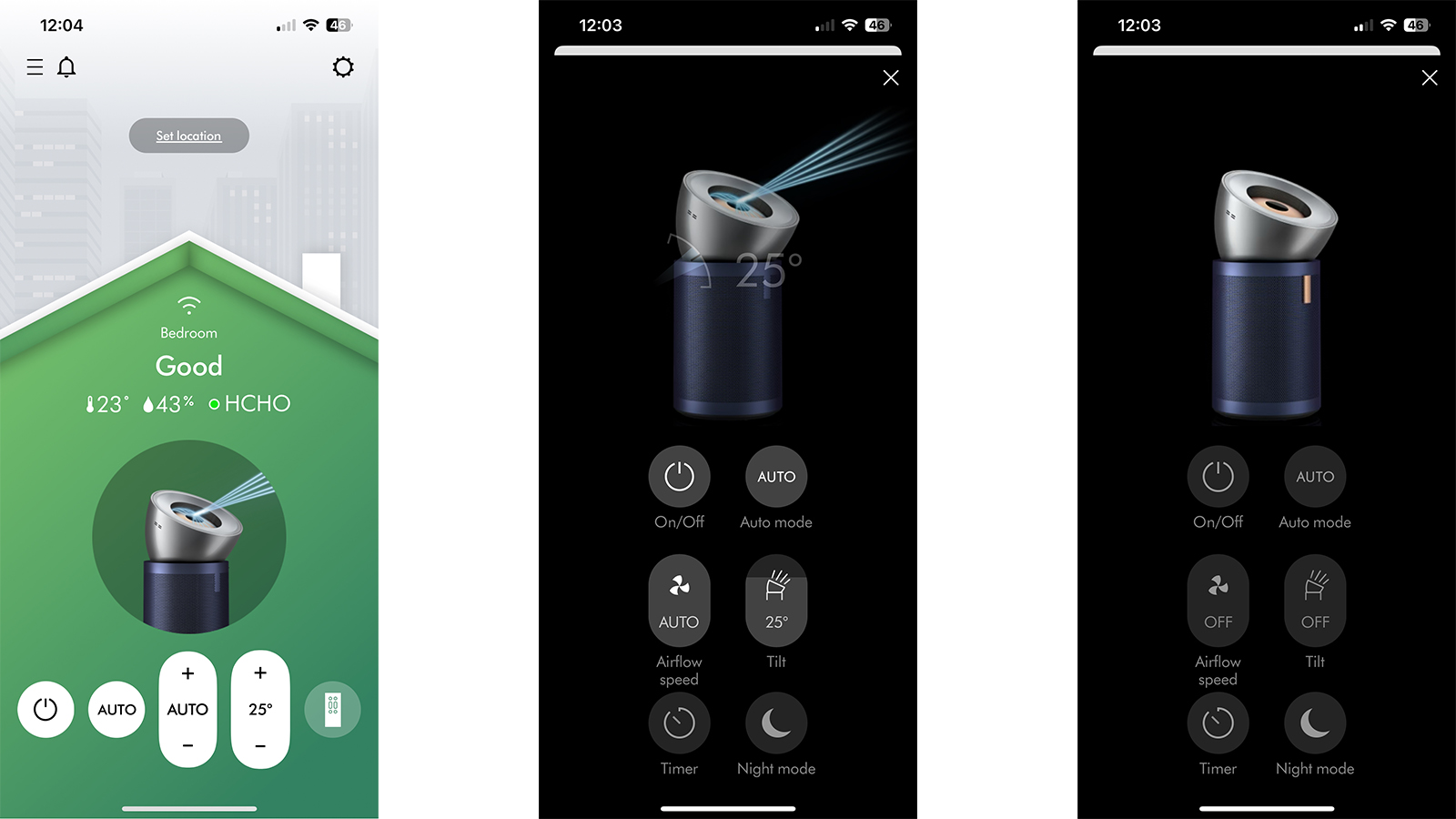
The Big+Quiet’s main function, however, is air purification. Filtration here is the same three-step system we’ve seen from Dyson’s best air purifiers, but with significant improvements. It adheres to the HEPA H-13 standard, which means 99.95% of particles as small as 0.1 microns will be captured, and it’s fully sealed so none of them can escape back into the air.
The HEPA filter, according to Dyson, is made up of 21 meters of borosilicate microfibers pleated 459 times to make it fit within the cylindrical base, while also giving it plenty of surface area to capture pollutants and last a few years. It uses selective catalytic oxidization (SCO) to break down the certain pollutants, particularly formaldehyde, and promises to capture them at a molecular level – again, something that’s not possible to test chemically outside of a lab, but I’m willing to take Dyson’s word for it.
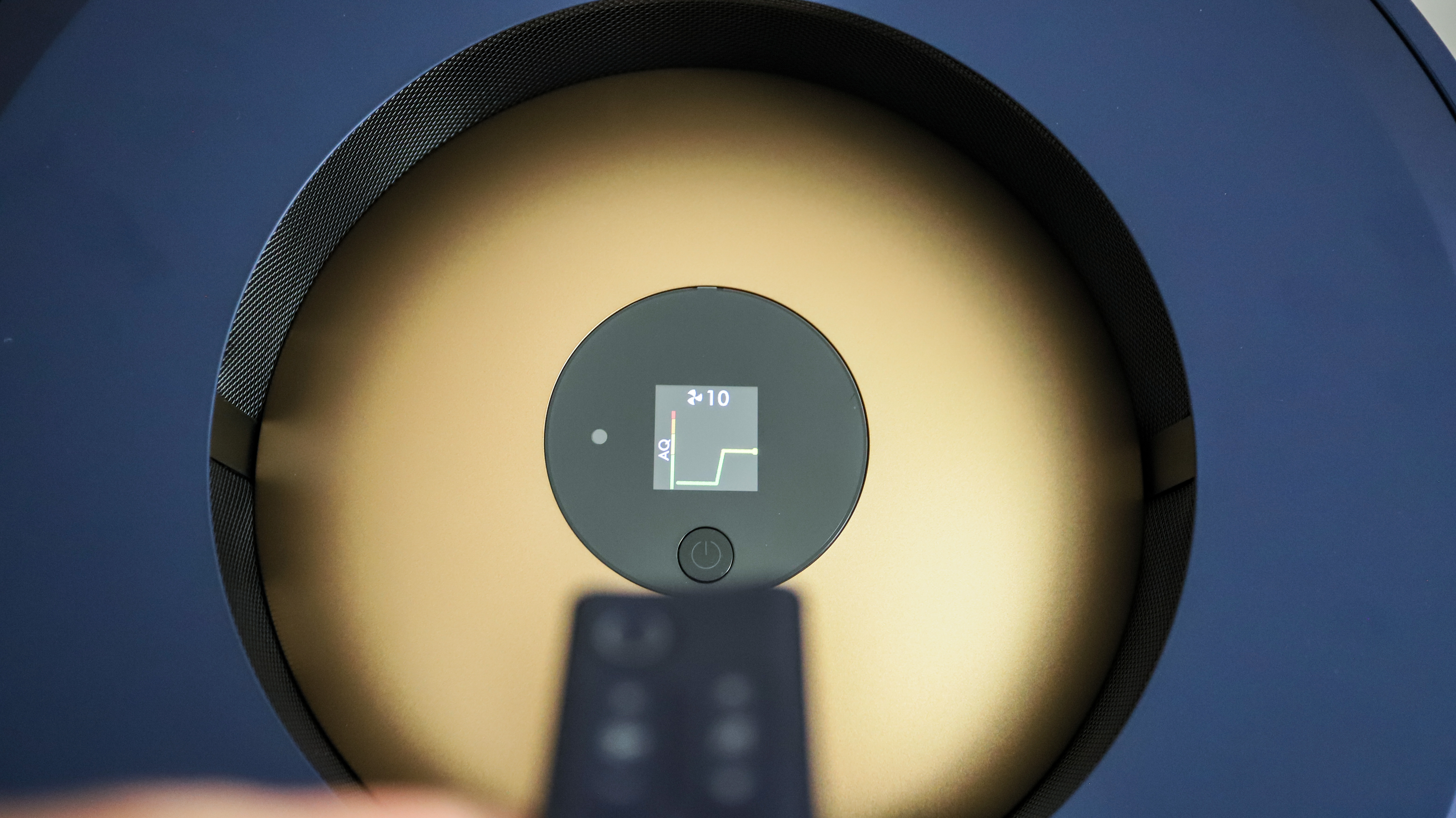
According to Dyson, the Big+Quiet’s formaldehyde sensor is powerful enough to detect molecules that are “500 times smaller than 0.1 micron”. The filter then breaks it down into CO2 and water, which then gets let out into the room as part of the stream of cleaned air. It’s important to note that the CO2 from formaldehyde breakdown is so negligible that it won’t be an issue at all.
If you opt for the more expensive Big+Quiet model, you’ll get an additional K-Karbon filter inside that uses a layer of carbon to capture odors, some organic compounds as well as up to three times more NO2 from car fumes (handy if you live on or near a main thoroughfare) than the standard SCO filter.
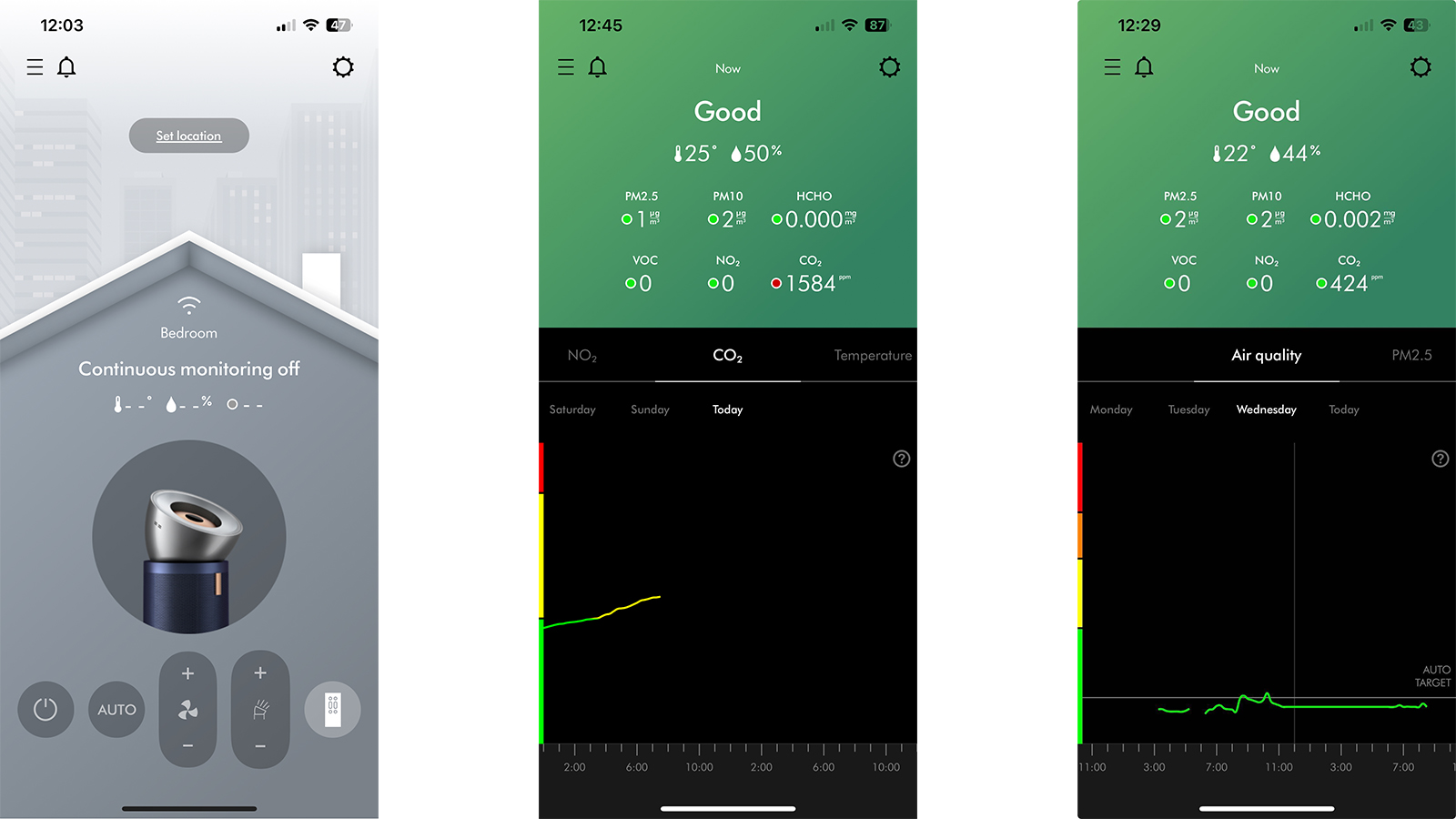
While you get full control of the Big+Quiet via its little remote control, you can also control it via the MyDyson app. A virtual remote control is displayed on the app and everything you can do with the physical remote, you can do on the app. You can also get graphical representations of what the machine is filtering. However, you can only get a per-day look. I wish Dyson would create a way to see a weekly or monthly report to get a broader overview of its performance.
Features score: 4.5 / 5
Dyson Purifier Big+Quiet Formaldehyde review: Performance
- 10 fan settings
- Auto mode is excellent
- Quieter than Dyson’s other purifiers
You need some specialized spaces and equipment to properly test a purifier, but I used it in my own home for a couple of months before coming to the conclusion that the Dyson Purifier Big+Quiet Formaldehyde does everything it promises.
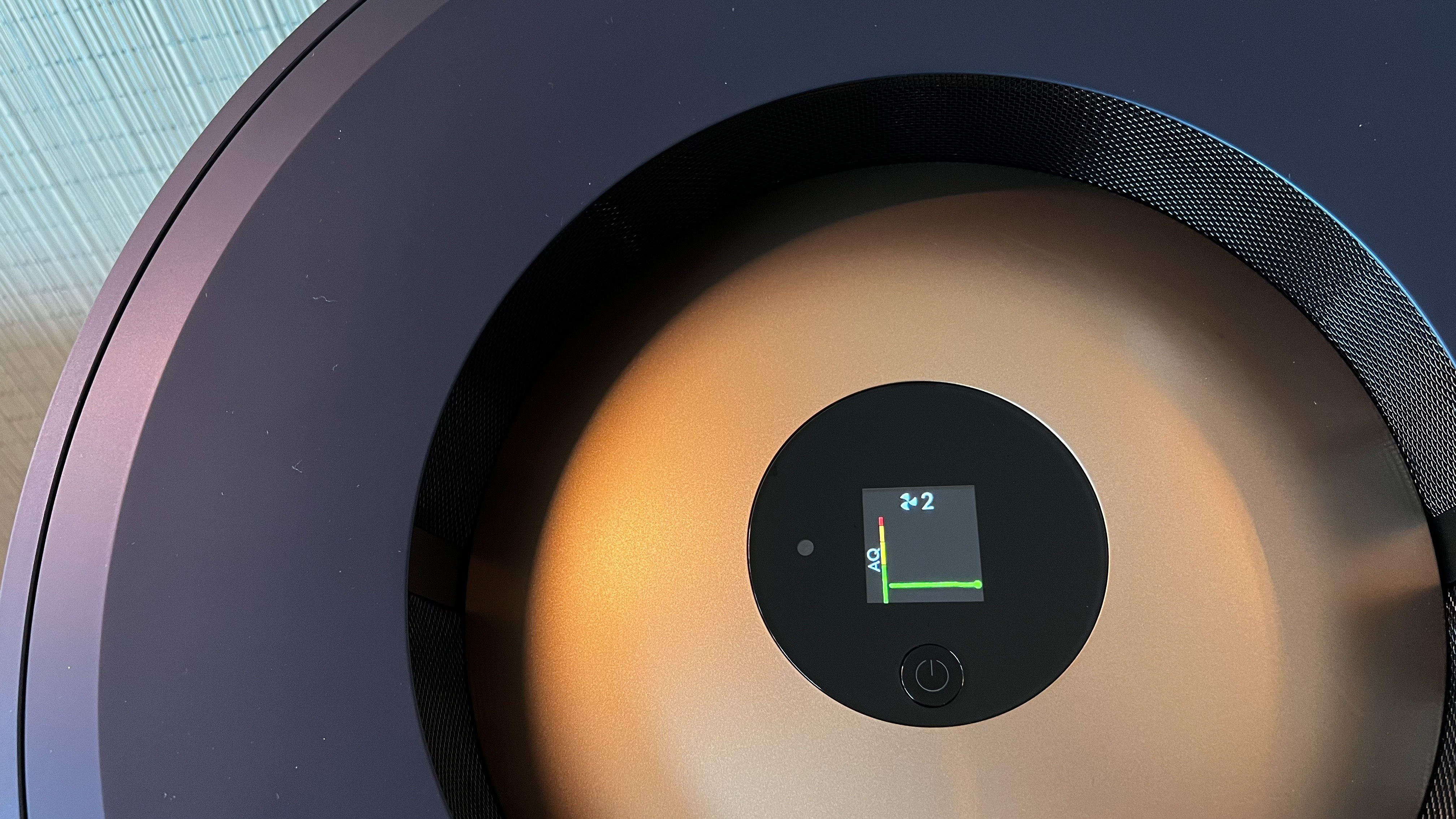
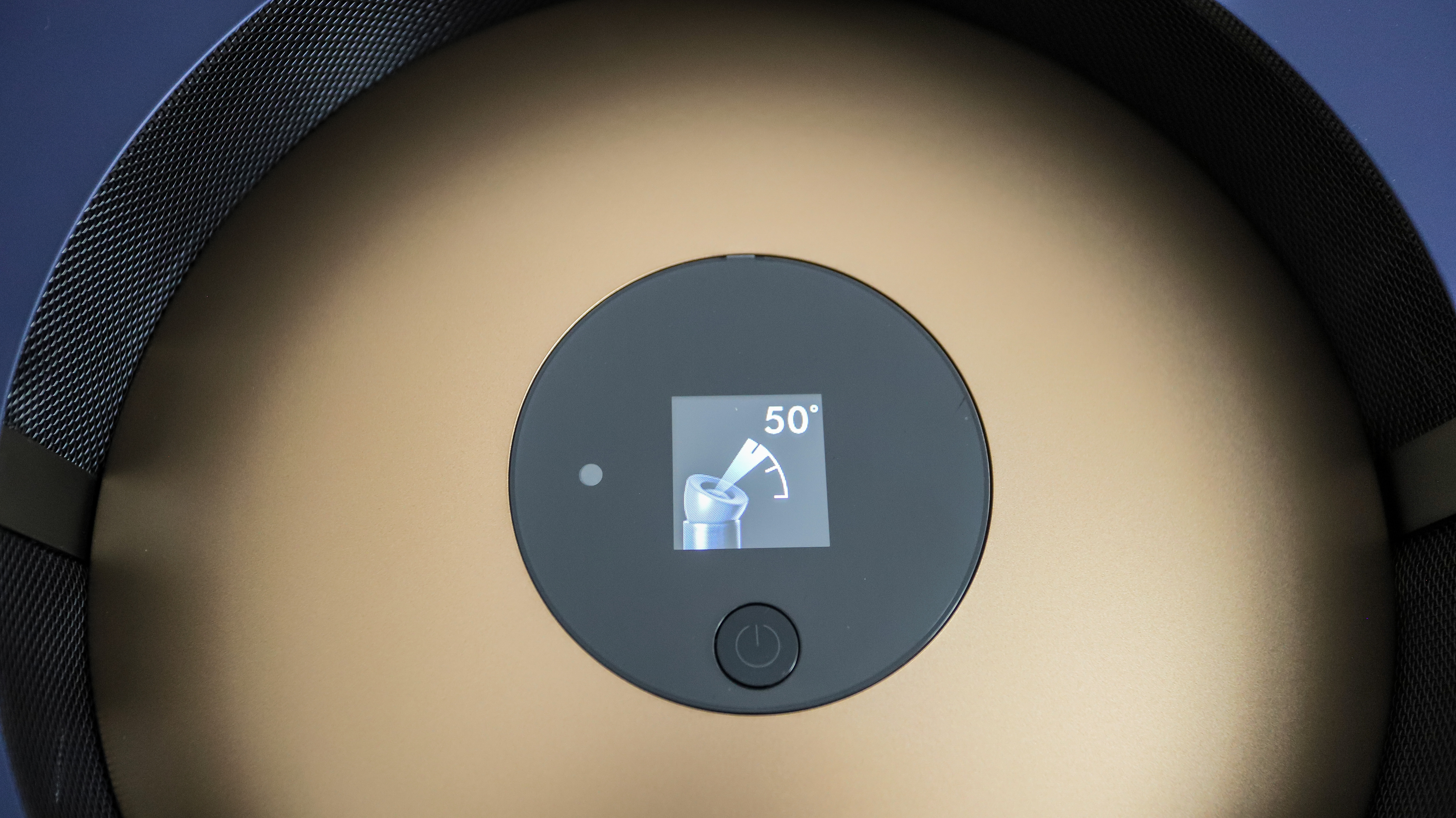
While you can choose a fan setting between 1 and 10, there’s an Auto mode here that can be your default setting when it’s not too hot. In Auto, the Big+Quiet carries on filtering if it needs to, but will power down to Breeze mode level 1 if ventilation isn’t needed. The moment it detects too much CO2 build up or more household pollutants while you’re cooking, the power of the fan automatically increases. If there’s nothing for it to do, it will idle but not switch off. However, the automatic increase of Breeze mode setting occurred only once during my testing period and I have since not been able to replicate this scenario… which is probably for the best as the CO2 was in the red that time.
Where other purifiers don’t necessarily pick up particles in the air unless they’re really close by, the Big+Quiet is capable of detecting pollutants from a couple of meters away. For example, it was able to pick up that there were more VOCs in the air when I was sitting two meters away using some nail polish remover. I usually have the screen displaying CO2 (which is also its default), but the display changed to the VOC screen automatically to indicate the rise and that it was actively filtering certain particles. I even found that the smell of the remover didn’t linger as long as it usually does when no purifier or fan is on.
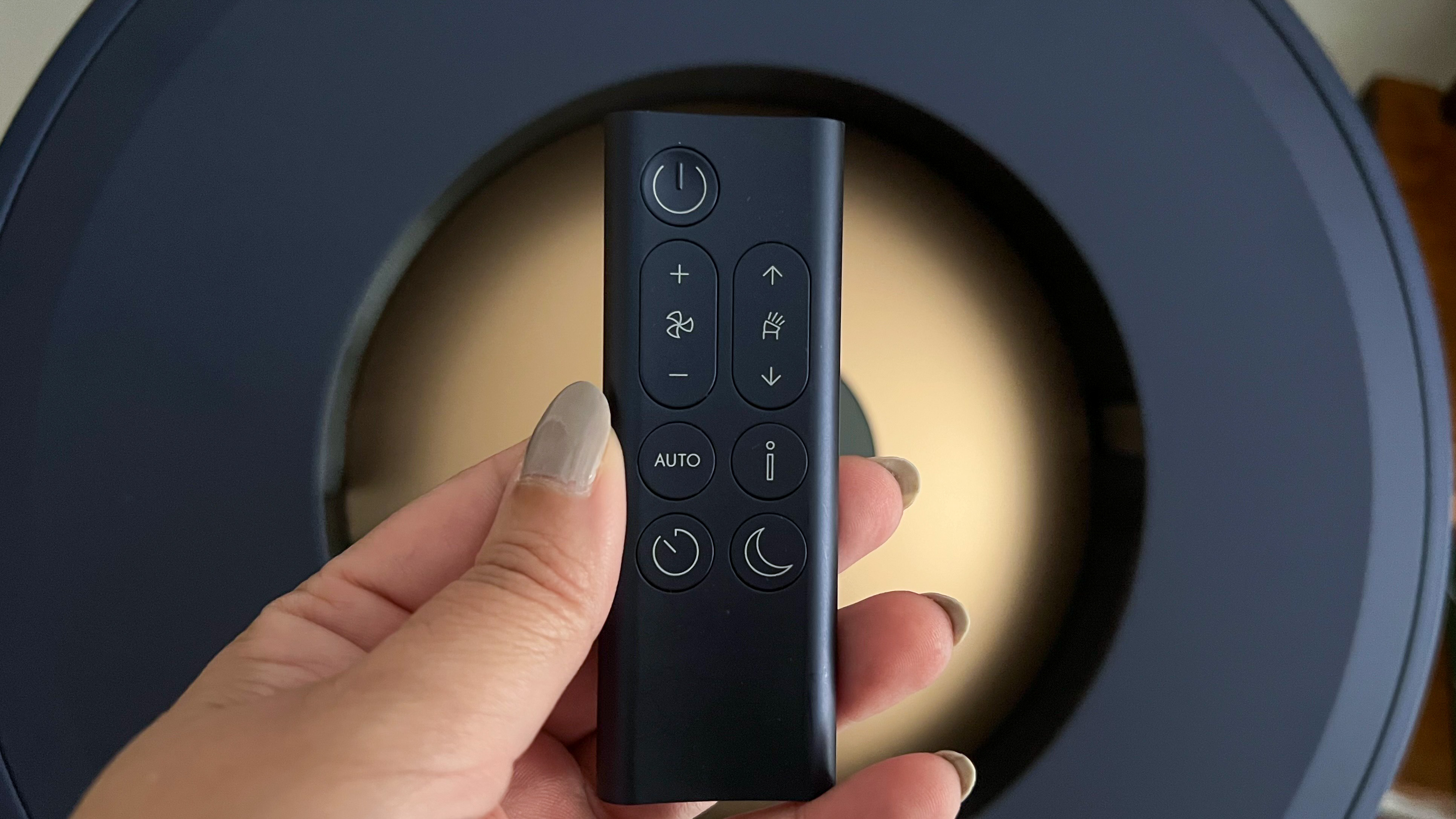
With the Big+Quiet, I found a lot of food odors tend to stay indoors for a long while unless there's good cross-ventilation – these also disappeared quicker than before I started using the Dyson.
What I really like is how quiet it is. Considering I have to shout to be heard over the Dyson Pure Hot+Cool when it’s at full power, I fully expected to do the same again. On the contrary, the hum of the Big+Quiet, even at full bore, disappears into the background as white noise.
I don’t have a sound meter to make accurate measurements, but by using a smartphone app to measure the decibels, I got 60dB at level 10. This is with the phone’s mic held just below the main jet of air and standing less than a foot away from the machine. In comparison, the Pure Hot+Cool, which is half the height and a fraction of the diameter of the Big+Quiet, clocked up 62.9dB. The smaller machine’s sound is also higher pitched in comparison to the big one, making it harsher.
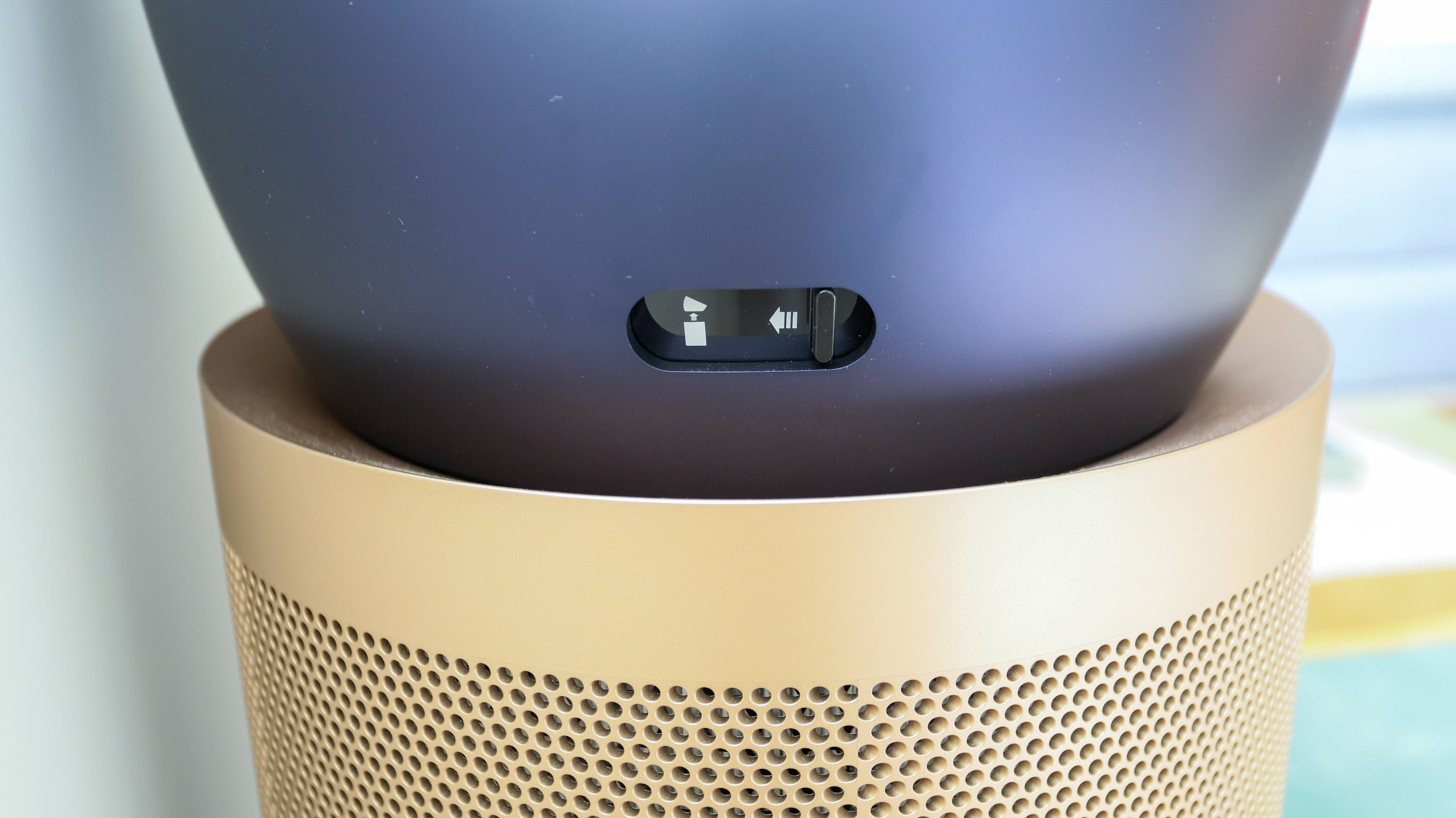
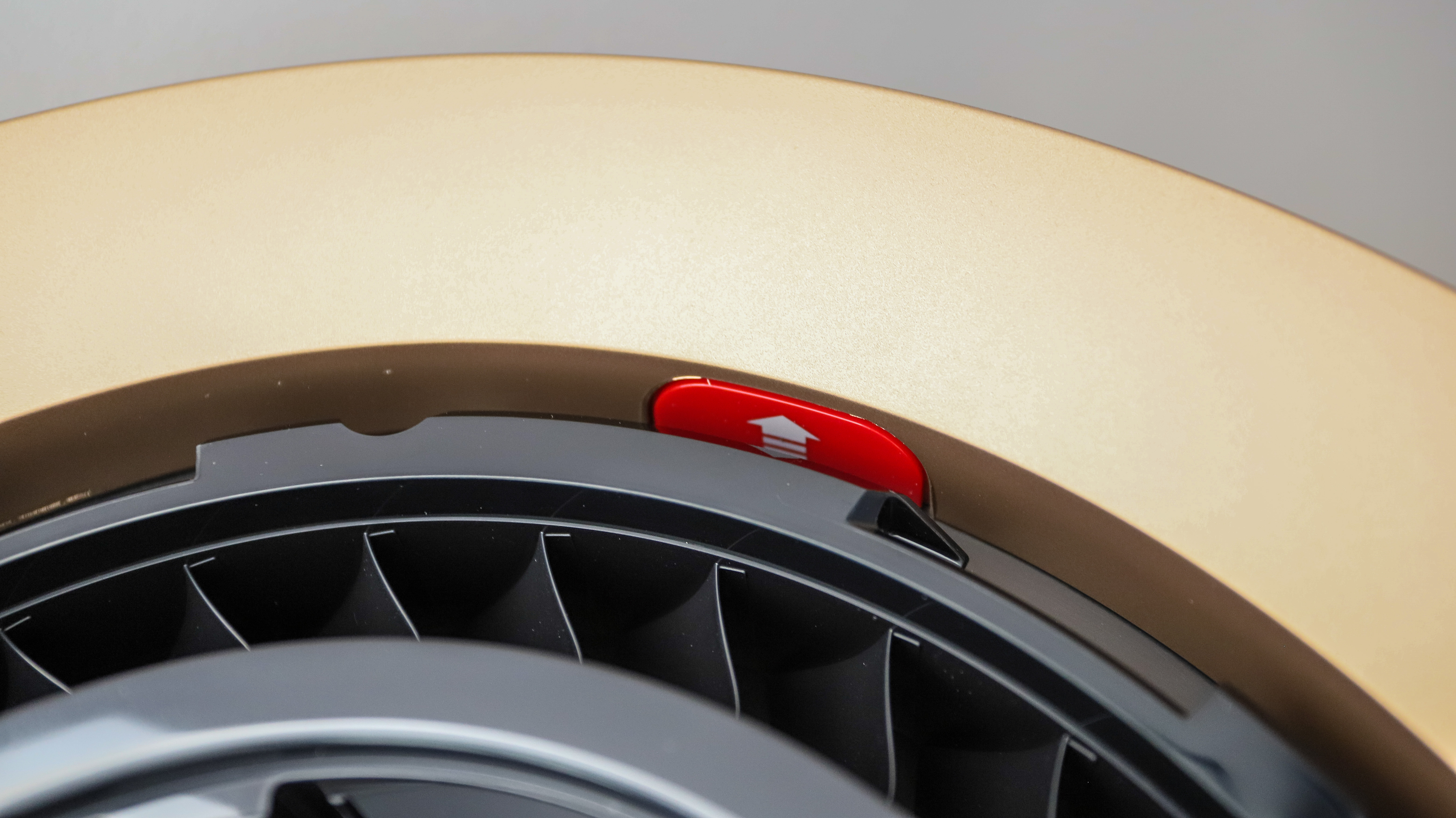
Dyson says it’s been able to lower the noise levels in the Big+Quiet by redesigning the motor for its purifiers. Sharp edges have been reduced and rough surfaces smoothened out to reduce air turbulence inside the machine, thus lowering noise levels.
Performance score: 4.5 / 5
Should I buy the Dyson Purifier Big+Quiet Formaldehyde?
| Attribute | Notes | Score |
|---|---|---|
| Value | It’s expensive, but it is a Dyson and its filter should last up to 5 years. | 3.5 / 5 |
| Design | It’s unlike anything Dyson has designed for the home but it serves a purpose and it excels at that purpose. | 4 / 5 |
| Features | It may not work as a heater, but it purifies, works as a fan, services a large space that most home purifiers would struggle with, and it does it all without being too noisy. | 4.5 / 5 |
| Performance | Everything Dyson says the Big+Quiet can do, it does well. Even as a fan, which isn’t its main functionality, it excels. | 4.5 / 5 |
Buy it if...
You want a powerful home purifier
It’s big for a reason – the Big+Quiet fits in a powerful motor that can purify up to 87 liters of air each second, plus it’s got a plethora of sensors to detect and filter a multitude of pollutants.
You live in a large home
The problem with most home purifiers is that they can service only a small space. If you have large rooms – like an open-plan modern home – you’ll need multiple purifiers if you want the entire space monitored. The Big+Quiet takes care of that problem.
You want detailed metrics
If you’re like me and you want to know what you’re breathing, you’ll get all the information on screen as well on the app.
Don't buy it if...
You live in a small apartment
You could save money picking up a smaller, less powerful alternative if you need to take care of smaller spaces.
You want a multifunctional purifier
While the Big+Quiet can purify air and double as a fan, it doesn’t heat up a space. If you’d rather get an all-in-one device for all seasons, you’ll need to look elsewhere.
You’re on a tight budget
The Big+Quiet is far from affordable and you could get two multifunctional purifiers that work as heaters and fans for the price of one Dyson.
Also consider
Perhaps the best alternative to the Dyson Purifier Big+Quiet Formaldehyde would be another Dyson – the Purifier Hot+Cool Formaldehyde. Not only is it cheaper, it’s also a fan and heater, making it a little more versatile for a little less money. However, it won’t do as well in a large space as the Big+Quiet. You can read our in-depth Dyson Purifier Big+Quiet Formaldehyde (HP09) review to know more.
If you’re in the US, you could consider the Shark Air Purifier 3-in-1 as an alternative that costs a fraction of the price of the Big+Quiet. This is also a multifunctional purifier that can cool and heat as well, and it’s quiet too. Our tester was quite impressed with this purifier – read our full Shark Air Purifier 3-in-1 with True HEPA review to know more. This purifier, however, isn’t available in all markets.
If you’re in Australia, perhaps the Breville The AirRounder Plus Connect could be a good alternative. It’s got a strange, fully rounded design, but it is quite effective in purifying, heating and cooling a space up to 40sqm. While we haven’t reviewed it on TechRadar, I tested the Breville AirRounder Plus Connect for our sister publication T3 a while back.
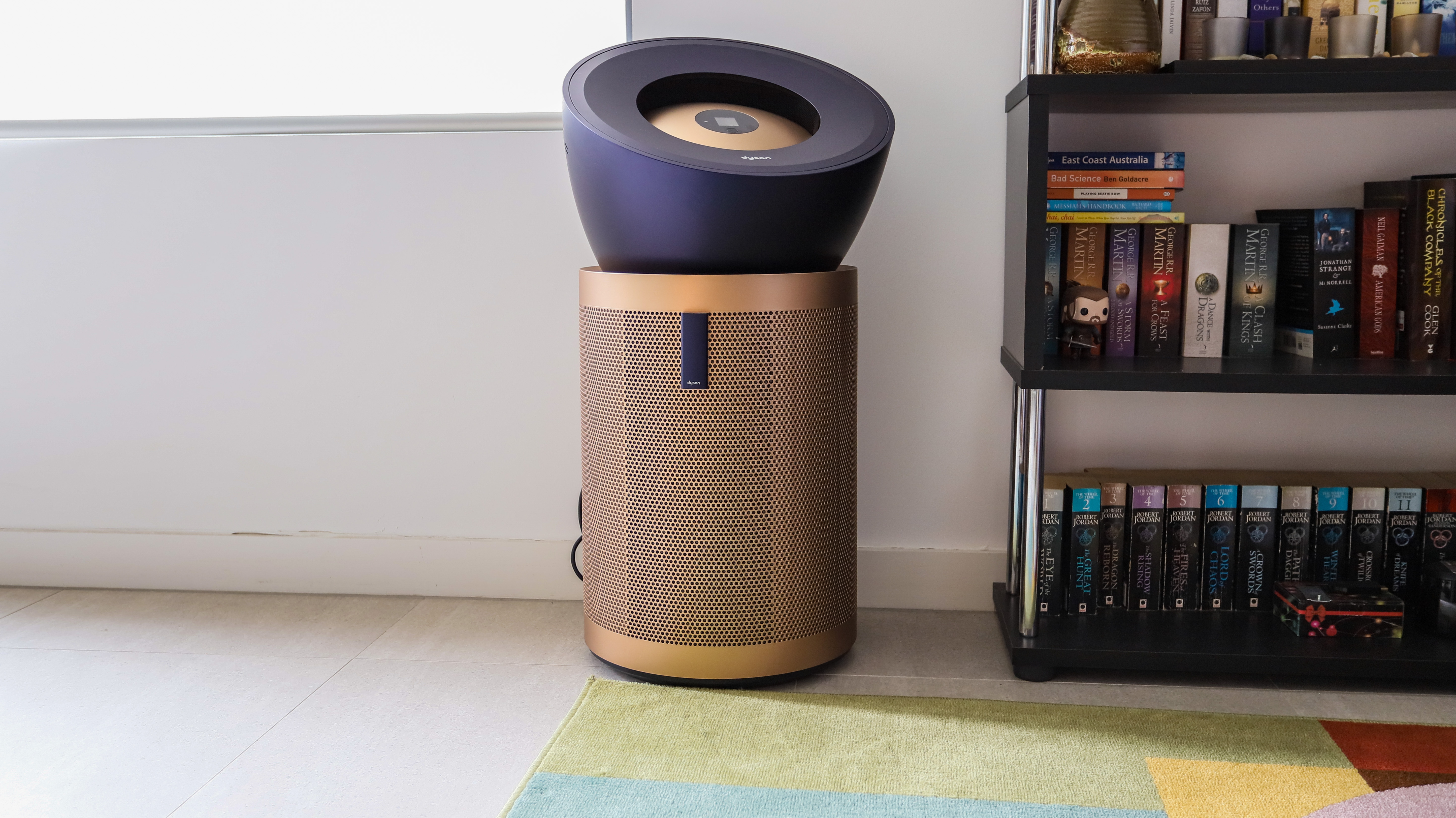
How I tested the Dyson Purifier Big+Quiet Formaldehyde
- Used every day for about two months
- Left it running continuously for 3 days on Auto mode
- Exposed it to various products, like deodorants and nail polish
I used the Dyson Purifier Big+Quiet Formaldehyde for about 8 weeks almost every single day. During that period, I tested it in different rooms, including a bedroom, the living room, open-plan dining and kitchen, plus a home office nook.
I tested all three Breeze modes and also left it in Auto mode to see how it would perform. During this time, I monitored how well it detected aerosols like deodorants, as well as how it handled strong odors from perfumes and food. I also had it running while I was cooking to see if the metrics changed.
I closed doors and windows to see how the CO2 sensor would perform and to see if the fan would automatically power up to ventilate the room.
I used an iOS app to measure the noise levels emitted when it was at full power (level 10) and used the same app to see how loud the Dyson Pure Hot+Cool can get when running at full bore as a comparison. I also compared the sound level to the Breville The AirRounder Plus Connect.
Read more about how we test
[First reviewed October 2023]

While she's happiest with a camera in her hand, Sharmishta's main priority is being TechRadar's APAC Managing Editor, looking after the day-to-day functioning of the Australian, New Zealand and Singapore editions of the site, steering everything from news and reviews to ecommerce content like deals and coupon codes. While she loves reviewing cameras and lenses when she can, she's also an avid reader and has become quite the expert on ereaders and E Ink writing tablets, having appeared on Singaporean radio to talk about these underrated devices. Other than her duties at TechRadar, she's also the Managing Editor of the Australian edition of Digital Camera World, and writes for Tom's Guide and T3.
